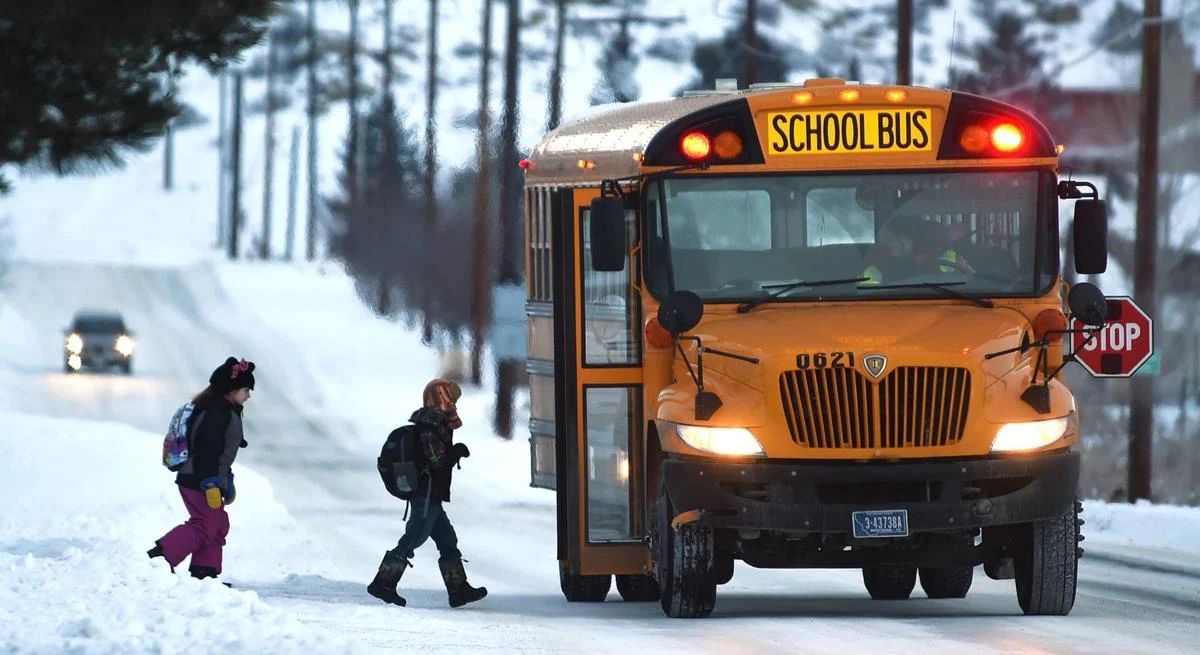As winter tightens its grip on the United States, parents and students are waking up to a familiar scenario: school closings due to extreme weather conditions. From coast to coast, districts are making tough decisions to prioritize safety in the face of dangerously low temperatures, icy roads, and heavy snowfall.
The Big Chill: Why Schools Are Closing
The current cold snap is no ordinary winter weather. Extreme cold warnings and advisories have been issued across various parts of the country, with wind chills plummeting to bone-chilling levels. In some areas, temperatures are dropping as low as 3 degrees Fahrenheit, with wind chills reaching a staggering minus 11 degrees.
These aren't just uncomfortable conditions; they're potentially dangerous. Exposure to such extreme cold can lead to frostbite in a matter of minutes, making the simple act of waiting for a school bus a health risk for students.
A State-by-State Breakdown
Alabama: On High Alert
While no final decisions have been made in some districts, many are preparing for potential closures. Baldwin County Public Schools, for instance, are likely to close if snow or freezing rain is predicted overnight1. The district's superintendent, Eddie Tyler, emphasized the danger that icy roads and bridges pose to bus operations and student safety.
Louisiana: Widespread Closures
In Louisiana, particularly around Baton Rouge, numerous school districts have announced closures:
- East Baton Rouge Parish: LSU, Southern University, and all EBR Schools closed on January 211.
- Ascension Parish: Closed with asynchronous virtual learning planned15.
- Tangipahoa Parish: Closed on both January 21 and 221.
Minnesota: Battling the Arctic Blast
Minnesota is facing some of the most severe conditions. Minneapolis Public Schools and the Anoka-Hennepin Public School District have canceled classes due to dangerous cold4. The state is under extreme cold warnings, with wind chills expected to remain below zero well into Tuesday.
New York: Syracuse Shutters Schools
Syracuse City School District, the region's largest with over 17,000 students, has announced a closure due to dangerously low temperatures and wind chill factors4.
Texas: San Antonio on Watch
While not yet closed, districts in San Antonio are closely monitoring the situation. East Central Independent School District and North East Independent School District have teams assessing road conditions, with decisions about closures to be made by 5:00 a.m. on affected days1.
Beyond Public Schools
It's not just public schools feeling the impact. Private institutions like St. Paul's Episcopal School in Alabama have also announced closures1. Additionally, many preschools, adult education programs, and community centers are shutting their doors to ensure community safety.
The Ripple Effect
School closures have far-reaching implications beyond just missed classes. Parents must scramble to find childcare or work-from-home solutions. After-school activities, sports practices, and community events are being canceled or postponed. Even preschool open houses and community education classes are affected2.
E-Learning: The Silver Lining?
Some districts are turning to technology to keep education on track. Byron Schools in Minnesota, for example, have declared an E-Learning Day3. This approach allows students to continue their studies from the safety of their homes, minimizing disruption to the academic calendar.
What Parents Should Do
- Stay Informed: Check your school district's website, social media channels, and local news for the most up-to-date information.
- Plan Ahead: Have a backup childcare plan in place for unexpected closures.
- Dress Appropriately: If schools remain open, ensure children are dressed in warm, layered clothing.
- Be Flexible: Understand that decisions about closures can change rapidly based on evolving weather conditions.
Looking Ahead
While the current focus is on January 21 and 22, 2025, the winter season is far from over. Parents and students should be prepared for the possibility of additional closures or delays in the coming weeks.
As we navigate this challenging winter weather, it's crucial to remember that these decisions are made with the safety of students, staff, and families in mind. While disruptions to routines can be frustrating, they pale in comparison to the potential risks posed by extreme weather conditions.
Stay warm, stay safe, and stay tuned to your local school district for the latest updates on this developing situation.
